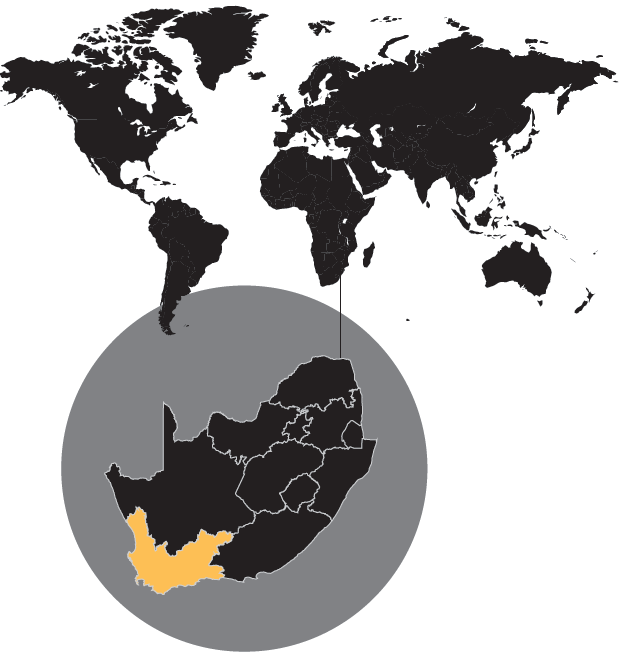Strategic Objective: ![]() and
and ![]() , Programme 1 detailed here
, Programme 1 detailed here
![]() , Programme 3 detailed on here
, Programme 3 detailed on here
Performance:
Apart from developing a better understanding of local needs, the NLC is committed to the optimisation of beneficiary support. To achieve impact in funding organisational capabilities such as a programmatic approach as well as results based management are being developed. A programme approach recognises that development takes place through interconnected actions within a specified geographical location. It further recognises that there may be multiple needs that are often better addressed by multiple actors. Development is not a linear occurrence but a cross pollination of multivariate factors coalescing to produce desired change. A programme approach is better positioned to impact various socio economic and political factors which produce a “defective” social system in a specific environment. Adopting a programming approach goes someway in unearthing the underlying factors which produce the social conditions that grant funding aims to address. The conceptual relationship between funding for impact and beneficiary-centricity is a causal one. Beneficiary-centricity is one of the key interventions undertaken by the NLC to enable more impactful funding. Beneficiary-centricity is therefore one of the strategic and operational capabilities have been developed by the NLC to achieve impact in funding. The NLC’s vision is to be a catalyst for social upliftment with a brand promise of “changing lives.” The broad societal impact that we aim to Funding for Impact beyond financially sustaining the organisations that we fund but to change lives of our beneficiaries as well as the communities in which they live.
In the NLC’s quest to be beneficiary centric and optimise operational efficiencies, the Board approved the realignment of the executive structure for operational effectiveness. This resulted in the establishment of the Operations Division headed by the Chief Operations Officer. The division comprises of all nine (9) Provincial Offices, Grant Funding, and Business Development Department. The Operations Division serves as a strategic enabler for the smooth running of the organisations’ operations with the goal of ensuring that set organisational objectives are accomplished efficiently and economically.
Having noted the decline in revenues generated from the proceeds of the National Lottery, the NLC sharpened its focus in ensuring the highest return on investments by funding high-quality, high-impact and beneficiary-driven projects. This was achieved through the review and implementation of the Standard Operating Procedures (SOPs), Assessment Tools, and Adjudication Matrix.
During the year under review, the unit ensured compliance with the amended Lotteries Act focussing mostly on compliance to legislated time-frames such as finalisation of adjudication within hundred and fifty (150) days from the date of receipt of application, notification of the applicants about the outcome of adjudication within thirty (30) days from the date of adjudication, payments of grants within sixty (60) days from the date of receipt of compliant Grant Agreement. Following the permanent appointment of Arts, Culture, Environment and National Heritage Distributing Agency in 2016/17 financial year, the Charities Distributing Agency was subsequently appointed within the year under review. The appointment of Sports and Recreation Distributing Agency is yet to be finalised by the dti. All the permanent and part-time Distributing Agency have been adequately integrated into the grant funding value chain. Significant progress was made in the roll-out of Education and Awareness programmes to empower both prospective and current beneficiaries. More than 2 300 Education and Awareness programmes were rolled-out across all provinces. These resulted in the improvement on the quality of applications and progress reports received. The pro-active funding model was adequately rolled-out within the current financial year focussing on funding of infrastructure projects such as Old-Age Homes, Sporting Facilities etc. in historically disadvantaged areas. In responding to the current challenges facing the tertiary education sector, the Board has approved an investment in the tertiary education sector. The investment will be rolled-out in the next financial year.
Monitoring and Evaluation
The NLC in its endeavour to monitor and measure the impact of funding, conducted 2 333 monitoring and evaluations site visits in all provinces. Over and above, impact evaluation studies were conducted in all provinces to determine the impact of NLDTF funding. From the projects visited, 14 414 jobs were created through NLDTF funding. Of the total jobs that were created 1 501 were for the youth. This interface with beneficiaries did not only focus on the appropriate utilisation of funds but also on the capacitation of beneficiaries assisting them to properly implement their projects. During the period under review, the M&E unit also extended its focus on the tracking of progress in the implementation of the Early Childhood Development (ECD) Legacy Project. To holistically intervene, the ECDs were also funded for training and development of which 709 practitioners have since obtained qualifications ranging from NQF 1 to NQF 4. In terms of the secondary beneficiaries, a total of 743 091 people have been reported to have either been served or reached with various services offered by NLC beneficiaries during the year under review. These are beneficiaries that have directly benefited from NLC funded programs or projects. A clear statistical breakdown is shown on the tables below.
Research and Development
The Research and Development Unit was established during the period under review to support the organisation in evidence based decision making. As a foundation, the unit equipped itself with the appointment of a panel of researchers from various research institutions to assist with implementation of the research agenda and any other research requests as necessary. A knowledge audit was also completed toward the goal of creating a Knowledge Management Hub for the benefit of internal and external stakeholders.
Stakeholder Relations
Capacitating beneficiaries with the skills necessary to run their projects optimally has been a mainstay of NLC Indaba resolutions since 2013. A pilot project has since been launched to equip beneficiaries of funding with skills at an NQF Level 4 that would empower them in the areas of Governance, Financial management, Procurement, and Contract management. Provide by SETA-accredited service providers, the initial roll-out in North West, Free State, Mpumalanga and the Northern Cape saw 159 beneficiaries emerge as graduates. Key stakeholders both at a national and provincial level were engaged throughout the year. The engagement at national level included amongst others the 2017 National Indaba which was held under the theme “Funding for Impact”.
The National Indaba is a forum where the leadership and decision-makers of the NLC interacted with beneficiaries and stakeholders from around the country at a central location, in line with the provisions of the Lotteries Act to educate the public about its mandate. The Indaba took place from the 20th to the 22nd September 2017 and it comprised workshops, exhibitions, awards ceremonies, a gala dinner and stakeholder engagement sessions where resolutions were drawn up and agreed upon. The National Indaba was followed by Post Indaba Stakeholder Engagement (PISE) at a provincial level. More than 1 000 stakeholders attended the National Indaba while 800 stakeholders attended the PISE.
Stakeholder engagement and Education and Awareness Conducted
| Quarters | Number stakeholder engagement |
Number education and awareness |
Estimated number of attendees |
| Q1 | 6 | 108 | 3 034 |
| Q2 | 6 | 24 | 1 274 |
| Q3 | 2 | 26 | 1 257 |
| Q4 | 5 | 5 | 800 |
| Total | 19 | 163 | 6 365 |
| Type of stakeholder engagement | Key focus areas | Action taken to monitor the effectiveness of stakeholder management | Future areas of focus |
| NLC beneficiary Capacity Building Programme | Providing training and mentorship to beneficiaries through an accredited service provider | Impact analysis/Post-training survey and interviews to measure efficiency of the programme | Train the trainer programme to be introduced |
| NLC Stakeholder Indaba | Stakeholder engagement focusing on funding requirements, funding for impact and the entrenchment of the new key priority areas for funding. | Monitoring and evaluation of funded projects through M&E unit and provincial offices | Positioning NLC as regulator |
| Education and Awareness roadshows | Extensive programme of engagement with beneficiaries on application processes, illegal gambling and society lotteries | Stakeholder evaluation/survey to measure the effectiveness of these engagements | Partnerships with other Funding organisations, the dti and institutions of learning |
| Post Indaba Stakeholder Engagements (PISE) | Feedback on the PISE Resolutions. Stakeholder engagement focusing on funding requirements, funding for impact and the entrenchment of the new key priority areas for funding. | Stakeholder evaluation/survey to measure the effectiveness of these engagements | Positioning NLC as regulator |
Marketing and Communications
Tasked with building and protecting the brand of the NLC, positioning it as a regulator and a funder, this unit oversees the branding, marketing, and information needs of the NLC. The amendment of the Lotteries Act and related changes to NLC processes revealed a bouquet of issues to be addressed through the communication strategy and education and awareness programmes. Reports across various media revealed that there was limited understanding of the regulations to the amended Act. This led to collaboration between NLC and the dti to unpack and translate the regulations. In terms of Media monitoring during the year, a total of 1 046 items across print, online and broadcast media were monitored of which 71% carried a positive tone whilst 4.7% carried a negative tone. Over and above 24, 2 % also revealed an increase compared to previous years of news items that carried a neutral tone – an area of opportunity for the organisation to engage the media in particular as a stakeholder group and enhance education and awareness of NLC processes.
Most of news items were carried online, which is not geo-specific. 14% were related to national issues whilst 11% were directly related to the Western Cape Province. The Mpumalanga province had the least coverage at 1%. The majority of the issues covered in the media are summarised below:
| Negative Coverage | Positive Coverage |
| Relating to Priority Funding Areas. | Funding for Impact Stories |
| Regulations 14 – Cooling-Off period – Discussed in detail in the Legal Division report here | Stakeholder Engagements including Indaba and Post Indaba Stakeholder Engagements |
| Part II, Regulation 10 relating to conduit applications – discussed in detail in the Legal Division report here |
|
| Section 2A of the Lotteries Act relating to Pro-Active Funding – discussed in detail in the Operations Division report here. |
Grant Funding
The NLC Grant Funding model is designed to promote and support the NLC’s strategic mandate by responding to socio-economic problems and leverage on opportunities through strategic funding. The key principle of the NLC’s funding model is to utilise NLC capitals to create opportunities for communities to realise their potential. The funding model is driven by an overall objective to Fund for Impact to maximise return on limited resources. The Funding Model is underpinned by Strategic Planning and Research
The NLC’s funding model is made up of Application-based funding and Proactive Funding.

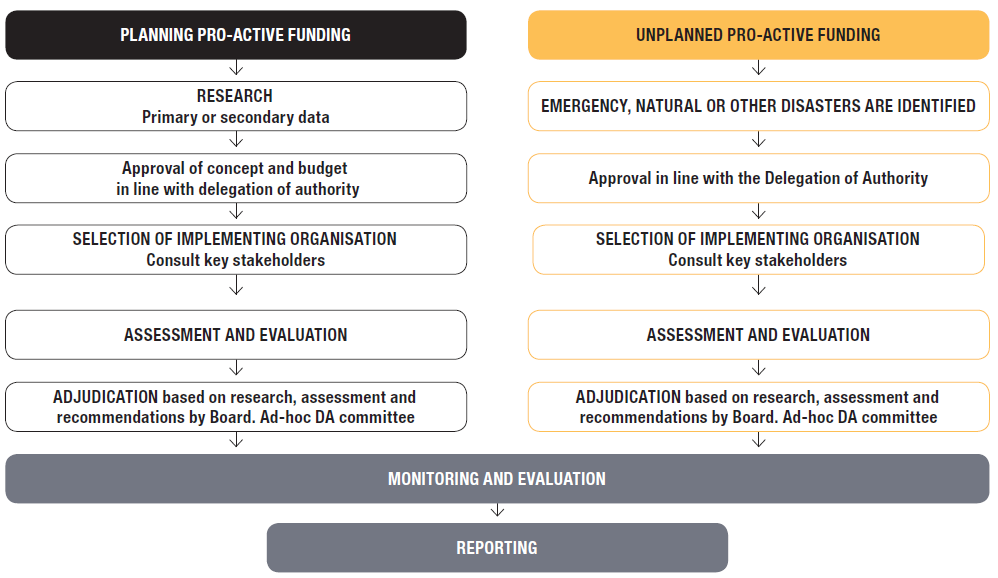
The NLC proactively funded 20 projects amounting to R284 872 798. The majority of projects funded under pro-active funding were in the Charities Sector at 57% followed by Sports at 27%, Arts and Miscellaneous at 14% and 2% respectively. Most of the funding under the Charities Sector was for the construction of Old Age Homes and a Drug Rehabilitation Center while most of the funding for the Sports Sector related to the construction of Multisport Facilities. Majority of funding for Arts Sector was for the construction of Library, Museum and Cultural Village while Miscellaneous funding was for the drilling of boreholes in areas affected by drought. The above charts further indicate that Limpopo, Northern Cape and North West collectively received 54% of the pro-active funding budget followed by Mpumalanga at 10%, Gauteng and KwaZulu-Natal at 9% each. The above charts shows the NLC commitment of funding high-impact projects with the limited funding at hand. From the total allocated budget for pro-active funding, 93% was spent on infrastructure project.
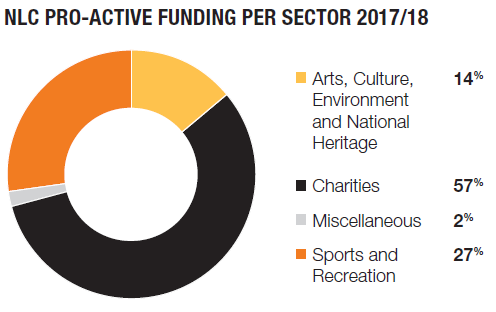
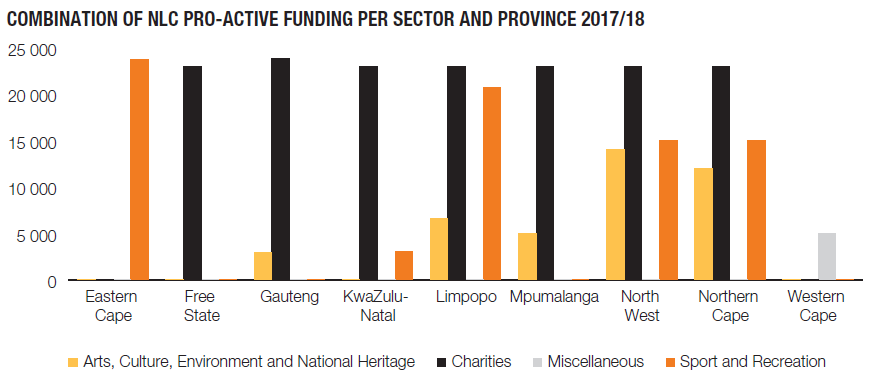
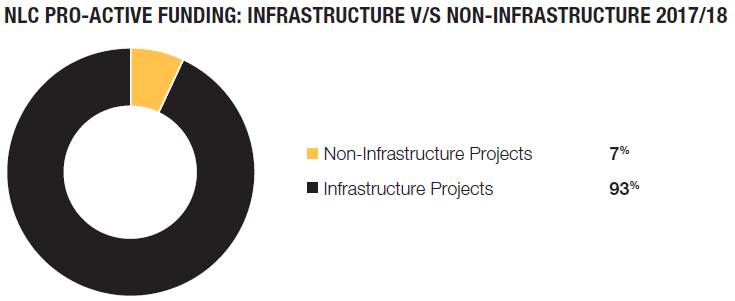
The NLC has revised the underpinning philosophy of its funding model based on “Funding for Impact”. This calls for a much more systematic and deliberate approach to grant making that enables the NLC to do more with less. It is the provision of funding to targeted projects and programmes that are catalytic in nature that lead to measurable, positive social change and community upliftment.
The Lotteries Act, as amended, stipulates that funds shall be held in the NLDTF for distribution by the Commission. The distribution of the allocated sum shall be fairly and equitably made amongst all persons who meet the prescribed requirements. A list of all NLDTF funded project is available on the NLC website:

| Arts, Culture and Natural Heritage – Uplifting Society Through The Arts |
Charities – Protecting
The Vulnerable |
Sport and Recreation – Funding A Winning Nation |
Miscellaneous Purposes |
The NLC promotes the preservation and development of arts, culture and heritage to empower communities to help themselves and enable artists to showcase their work internationally.
This sector funds the development of the arts and the preservation of South African culture and national heritage. The concept of national heritage is a broad one, which includes our natural environmental heritage as well as historical and architectural heritage.
In general, applications are welcomed from organisations that:
|
The NLC acts a catalyst for eradicating poverty and reducing inequality in South Africa, channelling 47% of its annual budget for distribution of funds to a range of good causes
The Charities Sector receives the largest share of funds and covers a wide range of organisations in the social welfare, community health, literacy, and social development fields.
Organisations can apply for funds if their activities:
|
The NLC is committed to sports development from grassroots level, and to building a healthy, winning nation.
Equity, access and development are key themes in this sector which accepts applications from national sporting bodies, regional bodies, local sports clubs, recreational clubs and schools.
The Sport and Recreation Distributing Agency considers funding for organisations that:
|
Trade and Industry in the Regulations on “Direction for Distribution Agencies in determining the distribution of funds from the National Lottery Distribution Trust Fund”.
|
Funds allocated to the respective sectors are allocated by the regulated Distributing Agencies. Members of Distributing Agencies are appointed by the Minister for a period of five years to serve on a full-time basis as members of the distributing agency and staff members of the Commission responsible for adjudication of applications for grants or recommendations of funding of worthy good causes received from the Commission.
Distributing Agency members are responsible for considering, evaluating and adjudicating applications for grants or recommendations of funding of worthy good causes received from the Commission and preparing reports on grants already awarded and on the performance of its functions to the board on a quarterly basis or as and when requested by the board.
The Minister determines the number of the distributing agency members in each category in consultation with the board, in line with the size of the funds in such category: The number of Distributing Agency members shall not exceed nine in each category.
Members of the distributing agency are appointed for a period of five years, which may be renewed only once, to serve on a full-time basis as members of the distributing agency and staff members of the Commission responsible for adjudication of applications for grants or recommendations of funding of worthy good causes received from the Commission.
Members of Distributing Agencies are led by Chairpersons of the respective Distributing Agencies and accountable to the Board. The Board was satisfied that:
|
|
During the period under review Distributing Agencies considered and approved allocation per sector as follows:
| Arts, Culture and Natural Heritage |
Charities | Sport and Recreation | Miscellaneous Purposes |
| R332 468 332.00 | R763 135 964.00 | R419 863 598.00 | R23 244 908.00 |
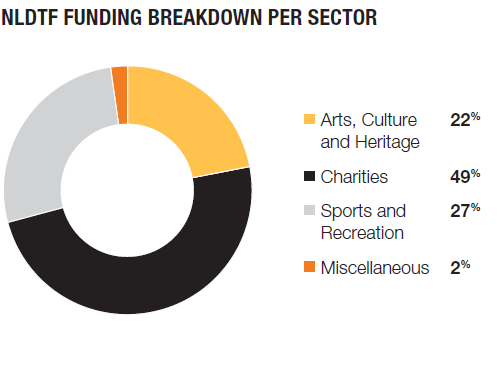
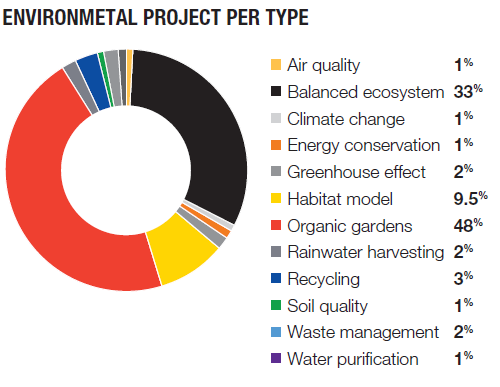
Environmental projects
Total number funded to date: 465 organisations
Total amount distributed to date: R590 025 280.00 (Source data from 2008 to date)
The above graph illustrates a percentage of each project type under the 465 environment sub sector projects funded to date.
The majority of the organisations that were funded for organic gardens were schools of which 80% of them were also either funded for a Jojo Tank (Water harvesting tank) or an irrigation system. The boreholes would fall under the “Water purification” projects.
A total of 14414 jobs were created/retained through NLC funding
| Sector | Total number of jobs created |
Permanent jobs |
Temporary jobs |
Gender | |
| F | M | ||||
| Charities | 10 412 | 6 289 | 4 123 | 7 027 | 3 385 |
| Sports | 670 | 153 | 517 | 324 | 346 |
| Arts | 3 068 | 706 | 2 362 | 1 721 | 1 347 |
| Miscellaneous | 264 | 1 | 263 | 150 | 114 |
| Total | 14 414 | 7 149 | 7 265 | 9 222 | 5 192 |
A total of 743 091 people has been reported to have either been served or reached with various services offered by NLC beneficiaries during the quarter under review
| Sector | Total | Male | Female |
| Charities | 138 918 | 61 416 | 77 502 |
| Arts and culture | 205 414 | 90 036 | 108 095 |
| Sports and recreation | 398 759 | 190 100 | 192 310 |
| Total | 743 091 | 341 552 | 377 907 |
The NLC has provincial offices which provide the following services
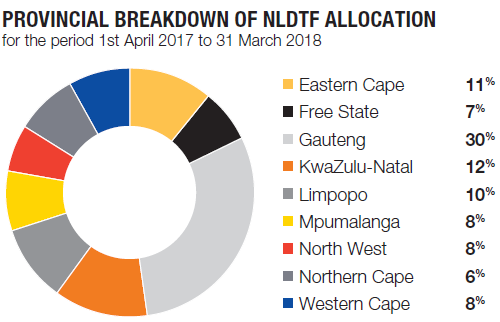

| Provincial distribution of environmental projects 2018 to date – 53 Provincial Contribution to NLDTF – Total Allocations for the Year – Total of 378 jobs created through Permanent jobs – 269 Provincial Office Phase 4A, Waverly Office Park |
| Empilisweni HIV/AIDS and Orphans Care Centre Amount granted to the Services rendered: Home |
The Eastern Cape was allocated 10.7% of the total allocations made in FY2017-18 to the value of R159 million; the largest share went to Sport and Recreation (17%), followed by Arts, Culture and Heritage and Miscellaneous (9% each) and lastly Charities (7%). Over 400 public schools were granted funds to upgrade and improve their sporting infrastructure. The relatively small allocation to Charities can be attributed to the fact that many small grant applicants from the 2015 Charities call were still being processed; we expect to see increased uptake of Charities grants in the 2018-19 FY.
The focus areas for the province are to:
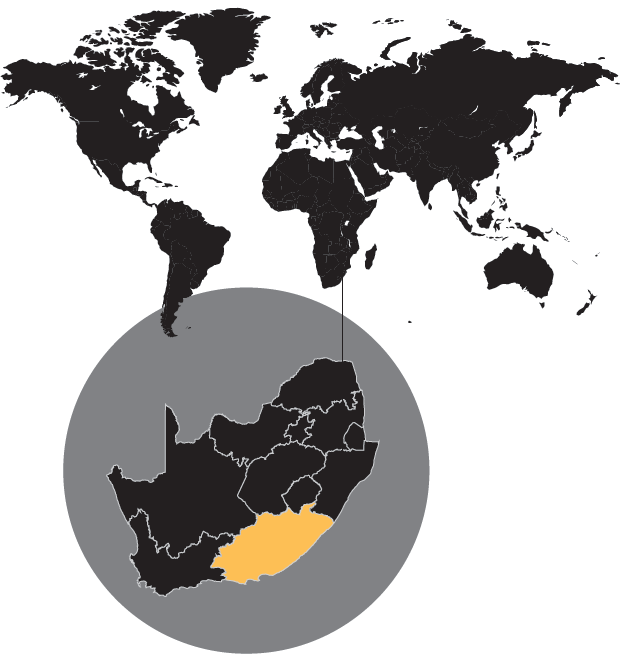
| Provincial distribution of environmental projects 2018 to date – 20 Provincial Contribution to NLDTF – Total Allocations for the Year – Total of 1 418 jobs created through Permanent jobs – 379 Provincial Office |
| There are number of outstanding projects that have been funded in the province in 2017/18 FY but only two will be highlighted Globe Environmental Care MAIN PURPOSE: provide Maokeng Disabled
|
The province has a population of 2.8 million with an estimated 4 150 NPOs, which
include those that not operational or currently fall out of NLC sectors. The rural landscape
promotes high poverty levels and remote communities.
The focus areas for the province are to:
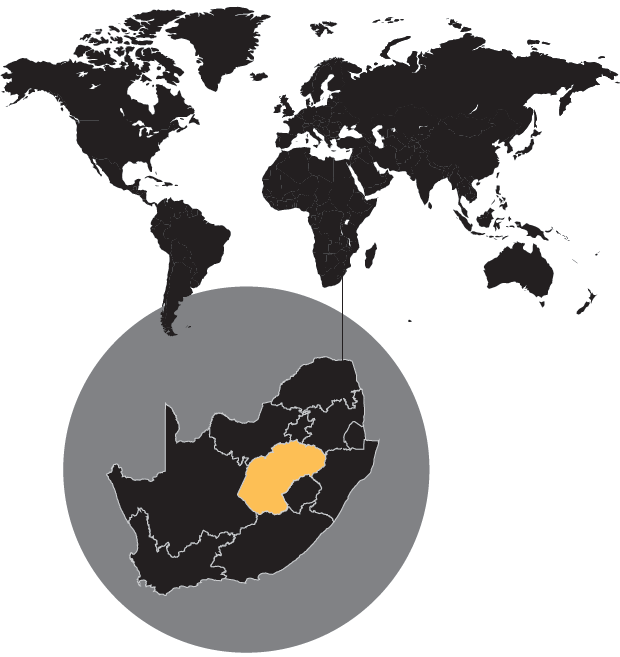
| Provincial distribution of environmental projects 2018 to date – 93 Provincial Contribution to NLDTF – Total Allocations for the Year – Total of 2 991 jobs created Permanent jobs – 1 710 Provincial Office |
| Bokone Community Home- Based Care and ECD Amount granted to the The organisation provides
The organisation has
|
Gauteng’s population constituting 25% of the total South African population.
The province has 60 000 registered NPOs with the Department of Social Development. Allocation to the province for the financial year under review was 29.53% of the total NLC allocations, rand value of R441 million. Distributed as indicated: Arts Culture and National Heritage – 35.26%; Charities – 27.84%; Sports and Recreation – 25.48% and Miscellaneous – 61.48%
The NLC has identified the West Rand as one of the Districts that have to receive focused attention based on the level of development as well as the amount of allocated by the NLC.
STAKEHOLDER ENGAGEMENT:
EDUCATION AND AWARENESS
The provincial office has conducted 10 Education and Awareness workshops around various municipalities in the financial year 2017/2018 and more will be conducted in the current financial year.
THE 5% ALLOCATION TARGET:
The provincial office mainly receives applications for small grants as many organisations can apply by themselves since the introduction of small grants. However, was there dissatisfaction from large organisations that were used to receiving larger grants in the past due to the reduced allocation because of new small entrants in the system. The demand is increasing at a rate higher than the supply. More engagement is required to explain the above.
That being the case, the Gauteng Province has continued to receive the highest share of the total annual Grant Budget. In the previous financial year, Gauteng received 30% of the budget, while the second highest province received a 12% allocation.
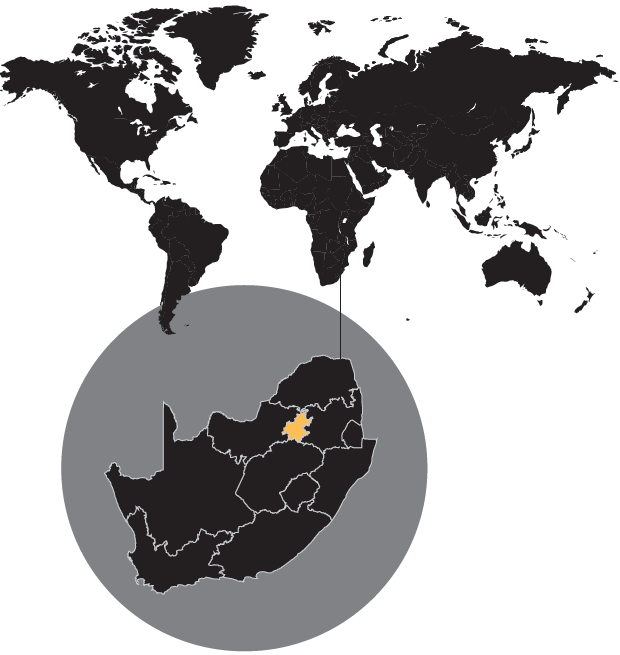
| Provincial distribution of environmental projects 2018 to date – 119 Provincial Contribution to NLDTF – Total Allocations for the Year – Total of 2 121 jobs created through Permanent jobs – 1230 Provincial Office Office 22, Smartxchange Building |
| NLC Funded Project: SA Lifesaving Sector: Sports and Recreation Amount Allocated: R3 747 000 Project Objective: to The project has carried |
KwaZulu-Natal has a population of 16.6 million, approximately 21.3% of the South
African population. Poverty is a major challenge facing the province with the poverty rate
estimated at 45.1%; an indication that a little less than half of the provincial population is
living on a monthly income that is unable to sustain them. There are approximately 16 846
NPOs registered by the Department of Social Development in the Province.
The province will focus on increasing the footprint across the province and improve
turnaround times. Given the vast size of the province, the focus will be to promote the use
of online application platform.
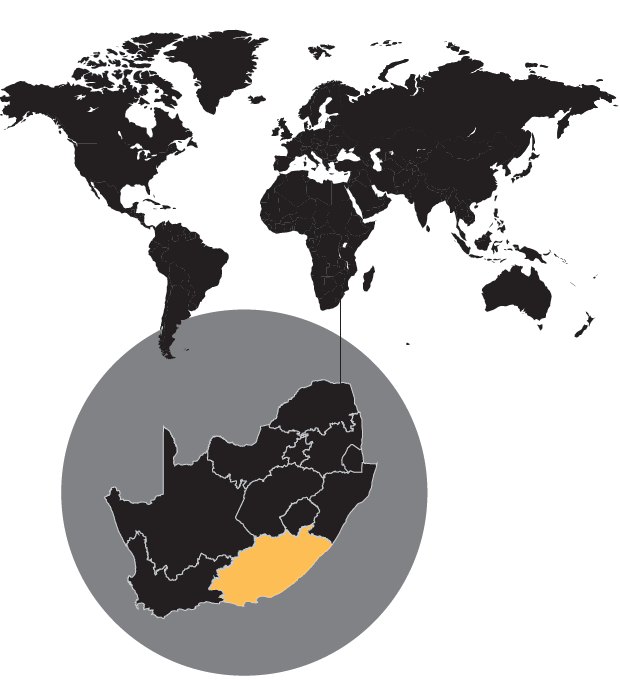
| Provincial distribution of environmental projects 2018 to date – 60 Provincial Contribution to NLDTF – Total Allocations for the Year – Total of 2 284 jobs created Permanent jobs – 878 Provincial Office No. 5 Landros Mare Street |
| Highlighted project: Mantopi Primary School Sector: Miscellaneous Amounted Allocated: Geographical area: The school has a total number Project 2: Arts & Painting Sector: Arts, Culture and Amount Allocated: Project Objective: nurture |
Limpopo’s population was 5 726 800 (2015), constituting 10.51% of the total South African population. The province suffers from high unemployment and illiteracy with an estimated 2 million people living below poverty line. The rural vastness of the province creates a brain drain. The province has estimated 19 700 active NPO’s.
Provincial Priority Areas
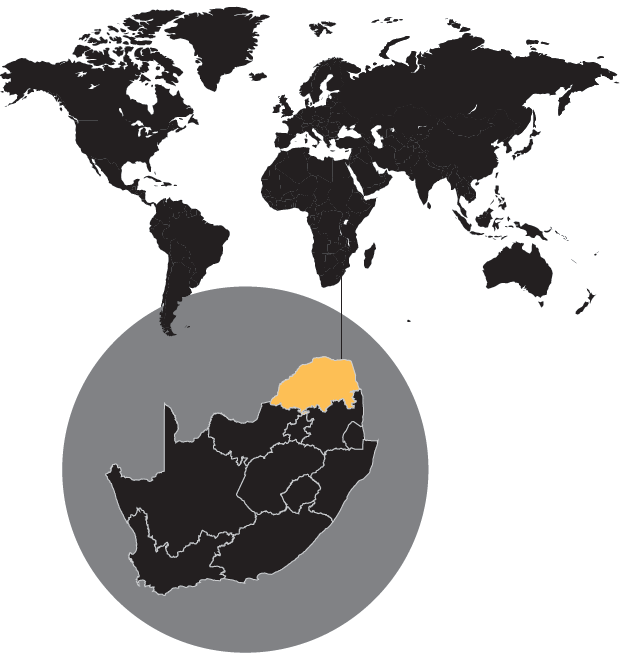
| Provincial distribution of environmental projects 2018 to date – 18 Provincial Contribution to NLDTF – Total Allocations for the Year – Total of 1902 jobs created through Permanent jobs – 1 086 Provincial Office 25 Rood Street |
| Highlight Project: Hospice of White River funded R855,340.00 through the Charities sector. NLC funding has made it
|
Mbombela (previously Nelspruit) is the capital and the administrative and business centre of the province which has the fourth-largest economy in South Africa. The province of Mpumalanga is faced with various social-economic challenges which include inequality, poverty, HIV/AIDS, substance abuse and youth unemployment and food security. The challenges facing province include:
Charities Sector – Sustainability issues faced by organisations result in double dipping and a lack of welfare infrastructure
Sports and Recreation Sector – Lack of Sports infrastructure and development of other sporting codes, often than Netball and Soccer. There is a lack of training and coaching
Arts, Culture, Natural Heritage Sector – Lack of performing arts hubs and growing applications for once-off events.
NLC Provincial Priorities
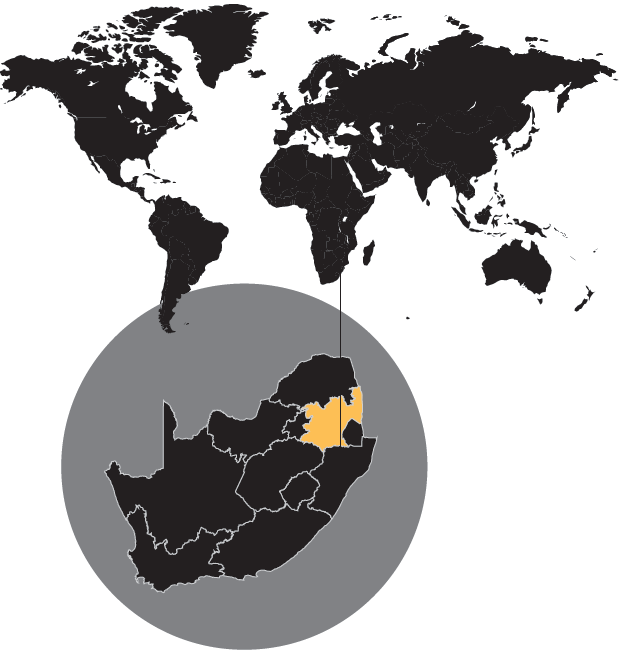
| Provincial distribution of environmental projects 2018 to date – 15 Contribution to NLDTF – Total Allocations for the Year – Total of 794 jobs created through Permanent jobs – 385 Provincial Office Suite D, 9 Roper Street |
| Pampierstad Youth Forum R670 800 funded from the Charities sector This is a youth organisation |
The province has a population of 1 145 861, qualifying as the province with the least population in South Africa. The province has high levels of unemployment as well as a huge geographic land base with isolated communities having poor access to services and information. The historic problem of substance abuse persists and the poor social infrastructure has an adverse impact on delivery of social welfare services. The Northern Cape has limited number of NPOs making it challenging to reach equitable distribution targets.
NLC Provincial Priorities
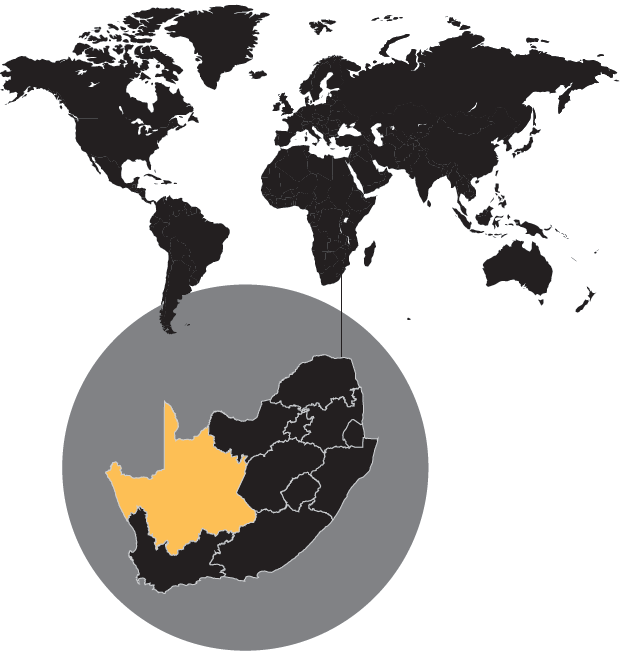
| Provincial distribution of environmental projects 2018 to date – 21 Provincial Contribution to NLDTF – Total Allocations for the Year – Total of 991 jobs created through Permanent jobs – 534 Provincial Office 16 Aerodrome Crescent |
|
North West’s population is estimated at 5 509 953.00. The province is made up mainly of agricultural land with townships and rural settlements. The is a high level of illiteracy and an estimated 6 000 NGOs, which are largely inactive, resulting in a low number of applications
Provincial Priority Areas
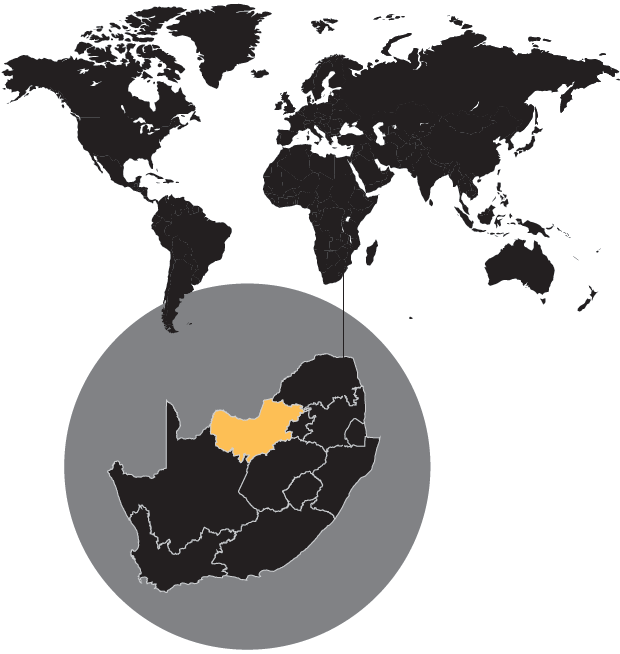
| Provincial distribution of environmental projects 2018 to date – 66 Provincial Contribution to NLDTF – Total Allocations for the Year – Total of 1535 jobs created through Permanent jobs – 678 Provincial Office Manhatten Place |
|
The NLC provincial office was permanently established in May 2015 with a staff complement of fifteen. The office is fully capacitated to deal with all pre- and post-administrative duties. Cape Town is a segregated city – low density in and around city centre and high densities in outlying areas.
Challenges plaguing the province include high unemployment (over 50%), poverty, gender-based violence, drug and alcohol addiction and gang violence.
The provincial office will intensify stakeholder engagements, particularly focusing on the NLC’s regulatory mandate.
